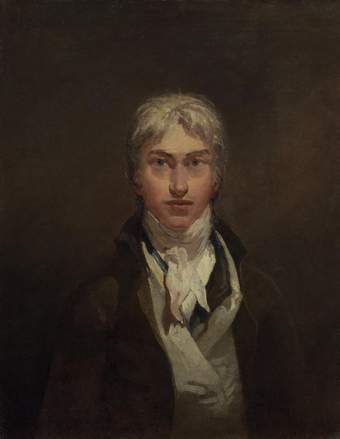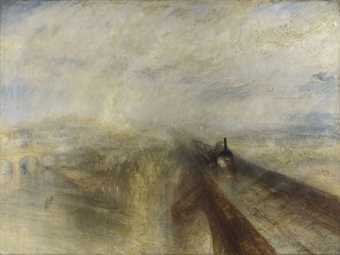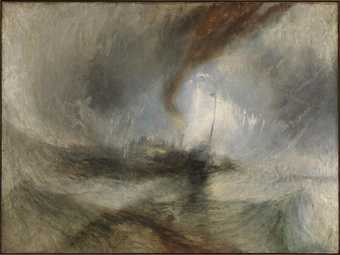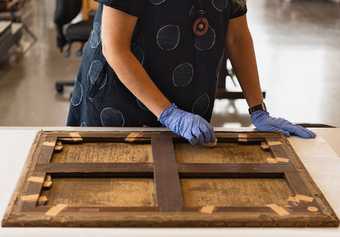
Photo © Tate (Lucy Dawkins)
I’ve been working as a paintings conservator in Tate’s conservation department for more than 20 years. Part of my job is examining paintings prior to exhibitions, mostly to ensure the paintings are stable and suitable for safe transit and display.
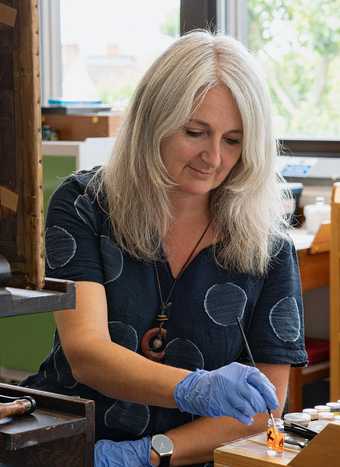
Paintings conservator Susan Breen at work in the conservation studio at Tate Britain, 2020
Photo © Tate (Lucy Dawkins)
It was while preparing for a recent touring exhibition that I examined the small landscape painting Mountain Scene with Castle, Probably Martigny c.1802–3 by J.M.W. Turner. It is a small, unfinished work that has rarely been displayed. After removing disfiguring dirt and varnish layers from the surface, the painting was examined in more detail and, using techniques such as infrared reflectography and X-radiography, some astounding information was discovered.

J.M.W.Turner
Mountain Scene with Castle, Probably Martigny c.1802–3
Oil paint on canvas
43.8 × 54 cm
Photo © Tate (Mark Heathcote)
The X-ray showed that Turner had not only reworked the landscape several times, but had also used the canvas previously for, not one, but two portraits – a woman and a man. In Turner’s oeuvre, portraiture in oil is extremely rare, with only two other examples known to exist; these are both self-portraits, one of which is Tate’s Self Portrait c.1799. Comparisons with these paintings confirmed that the materials used in Mountain Scene with Castle, Probably Martigny correspond with Turner’s media and palette of the time. In all my years as a paintings conservator at Tate, I have discovered many instances where artists have reworked and reused canvases, covering up earlier subjects or making (sometimes dramatic) changes to the composition, but never have I uncovered works as rare as these two hidden paintings.
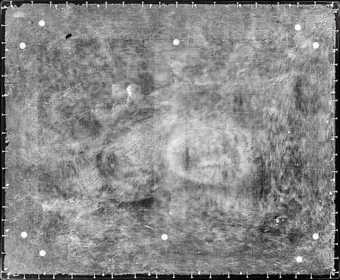
X-radiography reveals two hidden portraits beneath Turner’s landscape painting. The first, of a thin-lipped and probably dark-haired woman, could match the description of an unfinished early painting of the artist’s mother: ‘her nose aquiline … Her hair was well frizzed … surmounted by a cap with large flappers.’ Rotating the canvas 180 degrees, Turner painted another portrait, this time of a heavy-browed, youthful male with a strong nose and dark, intense eyes. Could this be a portrait of fellow artist Thomas Girtin, painted before his death in November 1802?
Photo © Tate (Mark Heathcote)
So, the question then remained as to the identity of these two people. Given how early they were painted in Turner’s career, it is most likely they were people well known to him. There is no documentation to suggest Turner ever accepted commissions for portraiture, so it has been most enjoyable to research and speculate on who the two sitters may have been.
Mountain Scene with Castle, Probably Martigny was accepted by the nation as part of the Turner Bequest in 1856.
Susan Breen is Paintings Conservator at Tate. She investigated the painting with Joyce H. Townsend, Senior Conservation Scientist at Tate, and Ian Warrell, former Tate curator and Turner specialist.


